Social Token vs NFT Comparison Tool
1. Primary Value Driver
2. Minting Cost Preference
3. Ideal Use Case
Ever wondered why some creators hand out social token vs NFT hype while others focus on digital art collectables? Both ride on blockchain, but they solve totally different problems. This guide breaks down what each token type is, how they work, where they shine, and how to decide which one fits your goal.
TL;DR
- Social tokens are fungible, price‑stable assets that grant access, rewards, or voting power within a community.
- NFTs are non‑fungible, unique tokens that prove ownership of a specific digital item.
- Technical: Social tokens use ERC‑20‑like standards; NFTs rely on ERC‑721 (or ERC‑1155).
- Best for community engagement → social token; best for scarcity‑driven collectibles → NFT.
- Regulatory risk is higher for social tokens; NFTs face market‑price volatility.
What Is a Social Token?
Social Token is a fungible blockchain asset that represents membership, access, or influence within a creator’s ecosystem. They trade 1:1 like a digital currency, and each token holds the same value as any other token of the same type.
Three main flavors dominate the scene:
- Personal/Creator Tokens - issued by musicians, influencers, athletes (e.g., Sting’s fan token).
- Community Tokens - power DAOs, grant voting rights, and reward participation.
- Platform Tokens - incentivize actions on a specific protocol or marketplace.
Because they’re fungible, creators can mint thousands of tokens in a single contract, keeping gas costs low and enabling fast batch transfers.
What Is an NFT?
Non‑Fungible Token (NFT) is a unique, indivisible digital certificate stored on a blockchain that proves ownership of a specific asset. Each NFT lives under its own contract address and can’t be swapped on a 1:1 basis.
The most common standard is ERC‑721, designed for one‑of‑a‑kind items such as artwork, music tracks, virtual land, or in‑game weapons.
Uniqueness drives scarcity, which in turn fuels price speculation. A single NFT can sell for anywhere from a few dollars to several million, depending on rarity and cultural relevance.
Technical Architecture: Fungible vs. Non‑Fungible
Both token types live on public blockchains-most often Ethereum or compatible Layer‑2s-but their contract logic differs dramatically.
- Standard: Social tokens usually follow ERC‑20 (or similar) which supports batch transfers, allowance mechanisms, and simple balance bookkeeping.
- Standard: NFTs use ERC‑721 (or ERC‑1155 for semi‑fungible hybrids) that requires metadata URIs, token‑specific ownership mapping, and often royalty logic.
- Gas Costs: Minting a batch of 1,000 social tokens can cost a fraction of the price of minting 1,000 individual NFTs because each NFT incurs separate storage writes.
- Scalability: Fungible tokens scale linearly with user count, while NFTs scale with the total number of unique items, which can strain block limits.
From a developer’s view, social token contracts are simpler, quicker to audit, and less prone to bugs that arise from handling per‑token metadata.
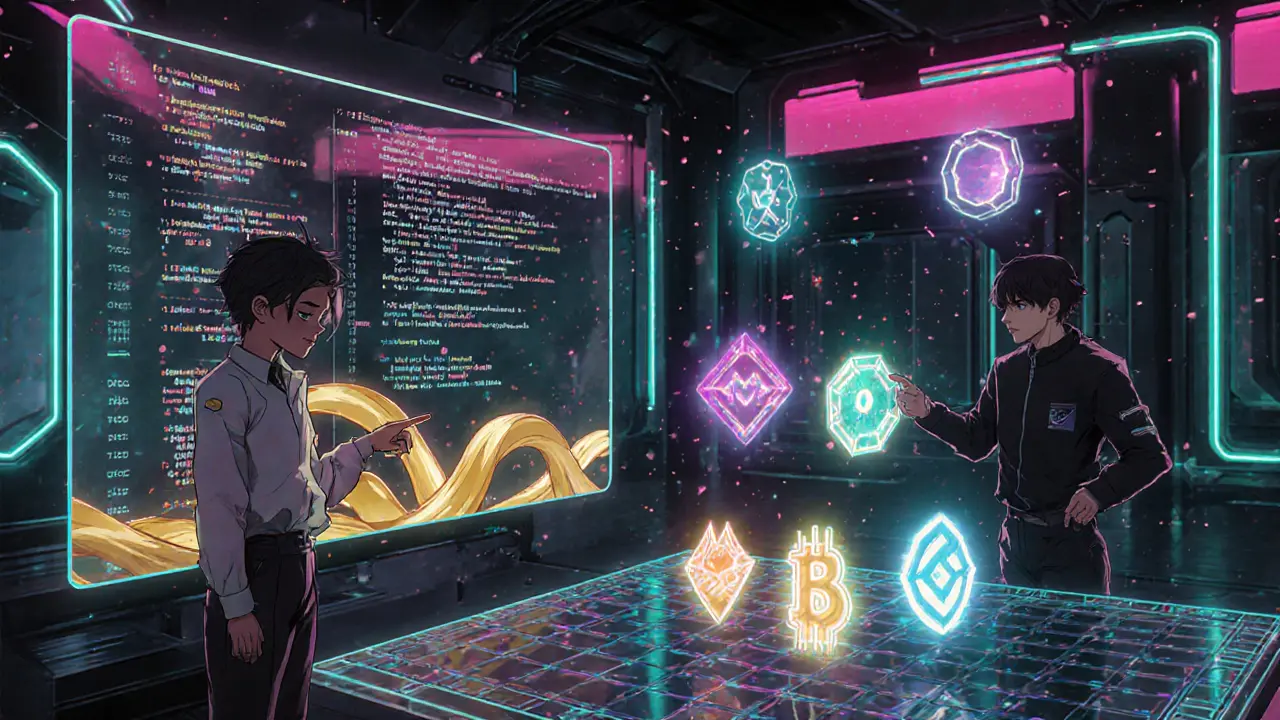
Use Cases Where One Beats the Other
Social Token Scenarios
- Exclusive access to a creator’s Discord or Telegram groups.
- Voting power in a DAO that decides future content directions.
- Loyalty points that can be redeemed for merch, early‑bird tickets, or livestreams.
- Revenue sharing: token holders automatically receive a slice of streaming royalties.
NFT Scenarios
- Digital artwork where provenance matters.
- In‑game items that are tradable on secondary markets.
- Virtual real estate in metaverse platforms.
- Limited‑edition music drops with embedded royalty splits.
In practice, many creators blend both: an NFT of a track + a social token that unlocks a private listening party.
Pros & Cons at a Glance
| Aspect | Social Token | NFT |
|---|---|---|
| Nature | Fungible (identical value) | Non‑fungible (unique) |
| Primary Value Driver | Community access & utility | Scarcity & ownership |
| Typical Standard | ERC‑20 (or similar) | ERC‑721 / ERC‑1155 |
| Minting Cost | Low - batch minting cheap | Higher - per‑token metadata |
| Liquidity | High - tradable 1:1 on exchanges | Variable - depends on rarity & marketplace |
| Regulatory Risk | Higher - may be seen as securities | Mixed - often treated as collectibles |
| Ideal Audience | Fans seeking ongoing engagement | Collectors & investors chasing scarce assets |
Regulatory & Risk Landscape
Social tokens sit in a gray zone. Because they can represent future revenue or voting rights, regulators in the U.S. and EU sometimes label them as securities, triggering KYC/AML obligations. NFT creators face less direct securities scrutiny but must respect IP laws-minting a piece you don’t own can lead to copyright battles.
Scams are rampant in both spaces. Social token projects can turn into pump‑and‑dump schemes, while NFT marketplaces have seen wash‑trading to inflate prices. Vetting the smart contract code and checking audit reports are essential safeguards.
How to Choose the Right Token for Your Project
- Define the core value proposition. If you want to reward repeat behavior or grant voting rights, lean toward a social token.
- Assess scarcity needs. For one‑off art drops or unique in‑game gear, NFTs are the obvious fit.
- Consider budget. Low‑budget community launches benefit from the cheap batch minting of fungible tokens.
- Check regulatory exposure. If your jurisdiction has strict securities rules, a simple loyalty‑style token might trigger fewer compliance hurdles.
- Plan for future integration. A hybrid model-NFT for the collectible, social token for community perks-often delivers the best of both worlds.
Remember, you can always start with a social token to build a base audience and later introduce NFTs for premium experiences.
Future Trends: Convergence and Hybrid Models
Industry analysts predict a blurring line between the two asset types. Expect to see:
- Creators launching an NFT series while simultaneously issuing a social token that unlocks backstage passes.
- Platform tokens that reward both holding a governance token and owning specific NFTs (e.g., “play‑to‑earn” ecosystems).
- Layer‑2 solutions that reduce gas enough to make batch‑minted NFTs financially viable, merging scarcity with scalability.
These hybrids aim to capture community loyalty (social token) and high‑value collectibles (NFT) in a single economic model.
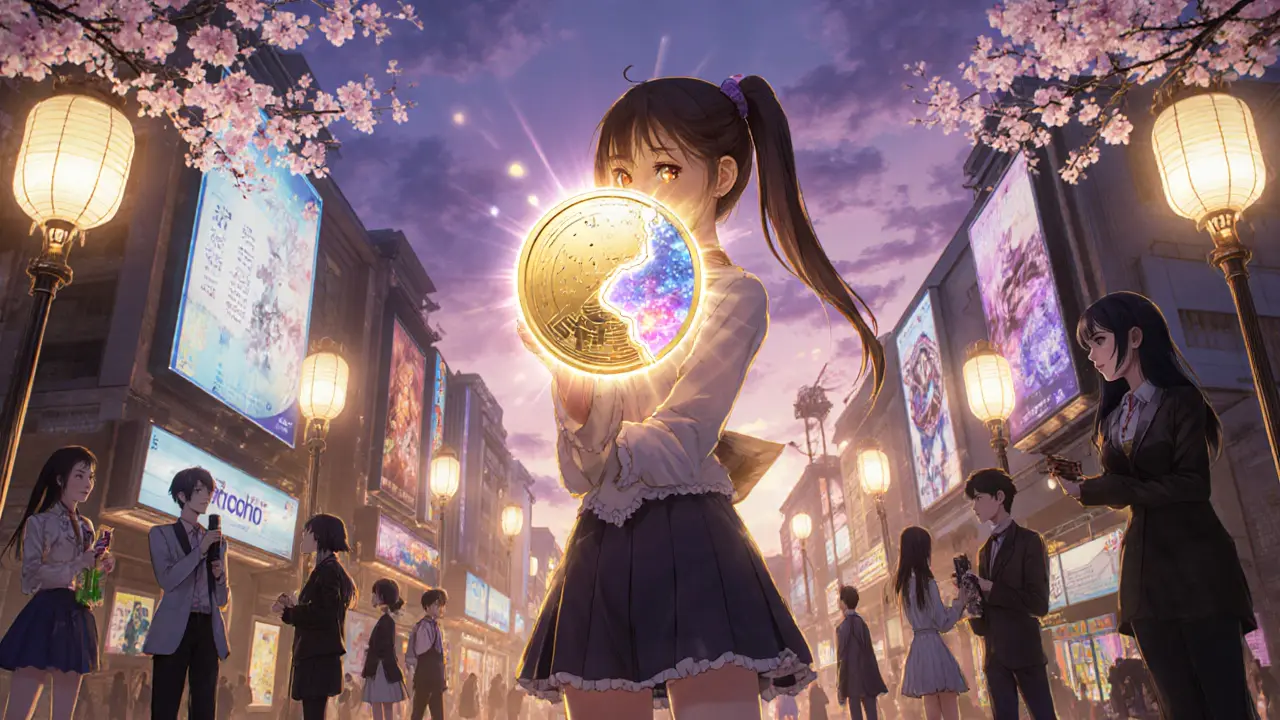
Frequently Asked Questions
Can I use a social token and an NFT together?
Yes. Many creators issue NFTs as exclusive artwork and launch a parallel social token that grants owners access to private events, voting, or merch discounts. The two assets complement each other: the NFT provides scarcity, while the social token fuels ongoing engagement.
Which token type is cheaper to mint?
Social tokens, because they follow a fungible standard (ERC‑20) that allows batch creation. Minting 1,000 social tokens typically costs a fraction of the gas needed to mint 1,000 individual NFTs under ERC‑721.
Do NFTs have voting rights?
Only if the smart contract explicitly encodes governance features. Most NFTs are purely ownership certificates, but developers can add DAO‑style voting functions that treat each NFT as a vote.
Are social tokens considered securities?
Regulators are still formulating guidance. If a social token promises profit sharing, dividends, or voting on corporate matters, it may fall under securities law in many jurisdictions.
Which market has higher price volatility?
NFTs generally exhibit higher volatility because each token’s price hinges on rarity, market sentiment, and creator reputation. Social tokens tend to track more stable, liquidity‑driven pricing, especially when they are listed on major exchanges.

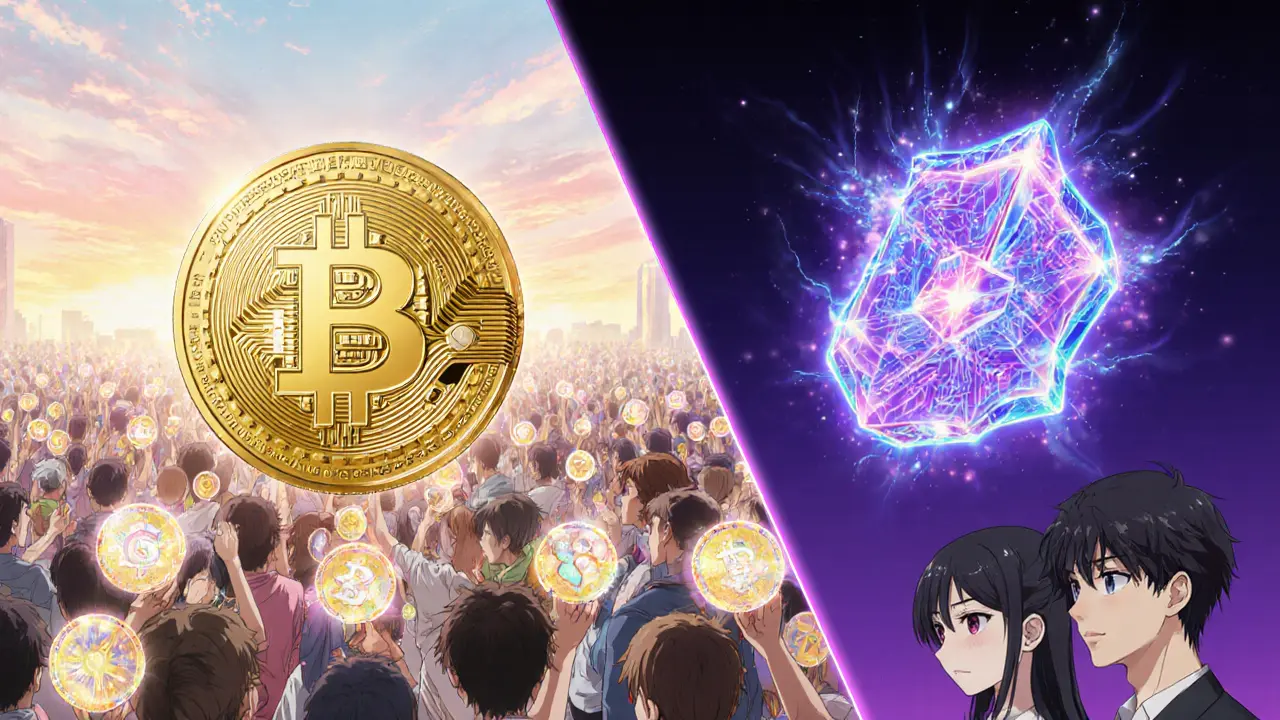
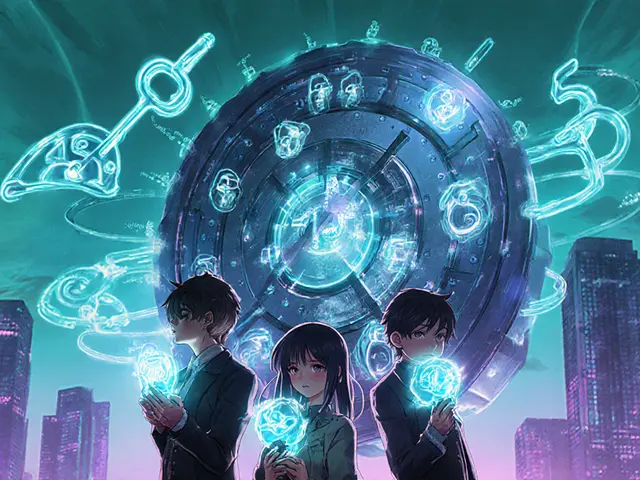
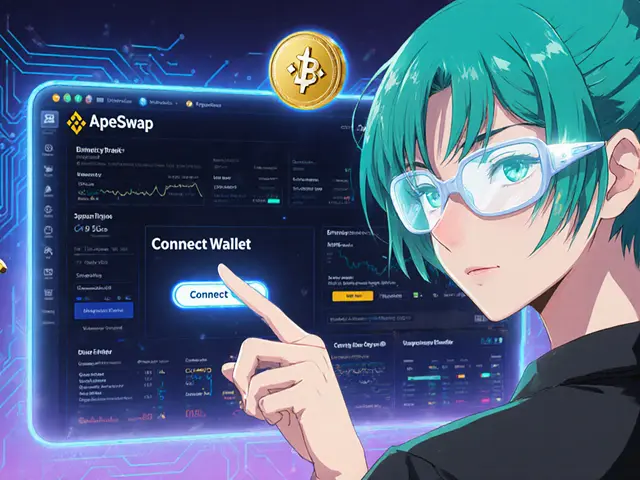
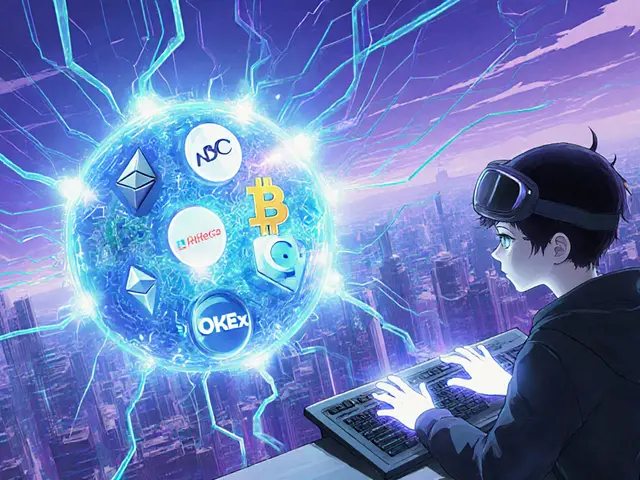


Comments
Clint Barnett
October 1, 2025 AT 02:15 AMThe world of digital assets is a kaleidoscope of possibilities that can bewilder even the savviest creator.
The kaleidoscope, swirling with colors of utility and speculation, invites creators to choose their path wisely.
Social tokens, while often masquerading as simple community coins, actually weave a tapestry of utility, governance, and recurring revenue streams.
Imagine a musician issuing a token that not only grants backstage entry but also automatically distributes a slice of streaming royalties every month.
That same token can be batch‑minted at a fraction of the gas cost of an NFT, allowing the artist to welcome thousands of fans without breaking the bank.
NFTs, on the other hand, are the glittering jewels of the blockchain, each one a singular proof of ownership that can command astronomical prices.
Their non‑fungible nature makes them perfect for artwork, virtual land, and in‑game items where scarcity translates directly into value.
The trade‑off, however, is that each NFT carries its own metadata payload, inflating minting fees and demanding more careful contract auditing.
From a developer’s perspective, ERC‑20‑style social tokens are as straightforward as a ledger entry, while ERC‑721 contracts resemble a miniature art gallery with a security guard at every door.
Regulatory waters are murkier for social tokens because the promise of future profit sharing can trigger securities laws in many jurisdictions.
NFTs usually sit more comfortably in the “collectible” category, but they are not immune to legal scrutiny, especially when copyrighted material is involved.
Community builders should therefore weigh the price of compliance against the allure of rapid onboarding.
If your primary goal is to foster ongoing engagement, incentivize participation, and offer voting rights, a well‑designed social token is the most efficient vehicle.
Conversely, if you aim to monetize a unique piece of digital art or create a scarce virtual asset, the NFT‑centric approach will likely yield higher upside.
Hybrid models are emerging, where a limited edition NFT unlocks exclusive access to a token‑gated Discord, blending scarcity with utility.
In practice, start with the simplest mechanism that solves your immediate problem, then layer additional complexity as your community matures.
Jacob Anderson
October 1, 2025 AT 02:16 AMOh great, another "must‑have" token that promises world domination but barely covers gas fees.
Social tokens are basically loyalty points on steroids, and NFTs are just overpriced digital stickers.
If you enjoy paying extra for the thrill of a token name, keep scrolling.
The real question is whether you have the patience to explain to your grandma why her favorite artist now has a blockchain wallet.
Spoiler: most of the time, nobody cares.
Kate Nicholls
October 1, 2025 AT 02:18 AMWhile the guide captures the technical distinctions, it glosses over the cultural impact of tokenizing fan relationships.
Creators who treat social tokens as mere cash cows risk alienating the very community they rely on.
Likewise, NFT drops driven solely by scarcity can feel like pay‑to‑play gatekeeping.
A nuanced strategy should consider the audience’s willingness to hold assets over time.
Moreover, the regulatory section could benefit from concrete jurisdictional examples.
Overall, the comparison is useful, but the real work begins when you map these tools onto your brand narrative.
Carl Robertson
October 1, 2025 AT 02:20 AMThe blood‑curdling scream of fees when minting a thousand NFTs is the stuff of nightmares for every indie creator.
Social tokens, with their soothing low‑cost batch mint, whisper sweet nothings to the frugal soul.
Yet, the darkness looms when regulators stalk the horizon, ready to brand your token as a security and strangle it alive.
In the arena of NFTs, price volatility roars like a beast that devours even seasoned investors.
Choose wisely, lest you become the tragic hero of your own blockchain saga.
Rajini N
October 1, 2025 AT 02:21 AMIf you’re just getting started, I recommend launching a simple ERC‑20 token first to test community appetite.
Keep the smart contract code minimal – just the basics of balance tracking and a mint function with proper access control.
Once you have a stable base of holders, you can layer an NFT series that rewards token holders with exclusive drops.
Make sure to publish an audit report; even a short third‑party review builds credibility with both users and exchanges.
For gas savings, consider a Layer‑2 solution such as Polygon or Arbitrum, which dramatically reduces minting costs for both token types.
Finally, write clear documentation so your community knows exactly what each asset does and how it can be used.
Oreoluwa Towoju
October 1, 2025 AT 02:23 AMIf you just want cheap community access, pick a social token.
Jason Brittin
October 1, 2025 AT 02:25 AMWow, look at us dissecting tokens like it’s a high‑school chemistry lab – love the enthusiasm! 😅
Remember, the biggest win isn’t the flashiest NFT, it’s a token that keeps fans coming back for more. 🚀
A community token can be the glue that turns casual lurkers into loyal ambassadors. 🌟
Don’t get tangled in the hype; focus on real utility and watch the numbers climb. 📈
And hey, if you ever need a pep‑talk about smart contracts, just holler – I’ve got the memes ready. 😂
Amie Wilensky
October 1, 2025 AT 02:26 AMThe essence of digital ownership, as presented, is a paradox, a glittering mirage, an illusion of control, yet it persists.
One might argue, with a sigh, that the line between utility and speculation blurs, dissolves, becomes indistinguishable.
However, the guide, while thorough, seems to skim the deeper philosophical question: what does “value” truly mean in code?
Perhaps the answer lies not in the token standard, but in the collective belief, the shared narrative, the social contract we inadvertently sign.
In any case, the journey continues, the debate rages, the blockchain hums.
MD Razu
October 1, 2025 AT 02:28 AMI see you tossed sarcasm like confetti, but let’s cut through the jest and address the substance.
Social tokens are not merely “loyalty points on steroids”; they represent a programmable stake in a creator’s ecosystem.
When designed with transparent vesting schedules and clear utility, they can foster genuine economic participation.
Dismissing them as “overhyped” ignores the measurable increase in community retention seen in several case studies.
Likewise, branding NFTs as “just overpriced stickers” overlooks the multi‑billion‑dollar market for digital art and its cultural resonance.
The true issue lies in execution, not in the abstract technology.
Projects that neglect legal counsel frequently stumble into securities compliance traps, while those that engage lawyers navigate a smoother path.
Moreover, the tokenomics model must align incentives between creators and supporters to avoid pump‑and‑dump cycles.
A well‑crafted social token can distribute a portion of streaming royalties, creating a feedback loop that rewards both parties.
Conversely, an NFT series that incorporates royalty splits can provide ongoing revenue to the original artist, rather than a one‑time sale.
The guide you referenced touches on these points, yet it could benefit from concrete examples like Friends With Benefits or Rarible’s token‑gated drops.
In practice, hybrid approaches-where an NFT unlocks exclusive token‑gated content-are gaining traction and delivering the best of both worlds.
Your sarcasm, while entertaining, risks alienating newcomers who might actually benefit from this nuanced perspective.
Let’s channel that energy into constructive dialogue that demystifies the regulatory gray areas and highlights best‑practice frameworks.
After all, the blockchain community thrives when we lift each other up rather than tear down with snarky one‑liners.
Charles Banks Jr.
October 1, 2025 AT 02:30 AMOh, the tragic saga of fees-how original, you’ve reinvented the meme of “blockchain drama.”
Sure, the cost of minting NFTs can feel like a horror movie, but that’s the price of scarcity, darling.
If you’re terrified, just stick to social tokens and call it a day; it’s the safe‑play for the faint‑hearted.
Reality check: every platform has trade‑offs, and drama won’t lower gas fees.
So, pick a tool, accept the cost, and stop writing the next gothic novel about it.
Ben Dwyer
October 1, 2025 AT 02:31 AMI understand the frustration with gas fees, and it’s important to remember that solutions like Layer‑2 scaling are already available.
Exploring options such as Polygon or Optimism can dramatically reduce minting costs for both NFTs and social tokens.
Pairing the right technology with a clear community roadmap will turn those “drama” moments into learning opportunities.
Keep the focus on delivering real value, and the community will stay engaged regardless of the occasional fee spike.
If you need guidance on integrating a Layer‑2, feel free to ask-I’m happy to help.